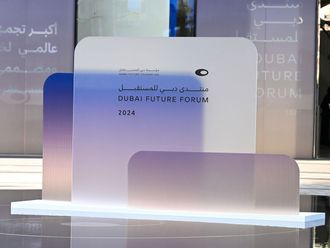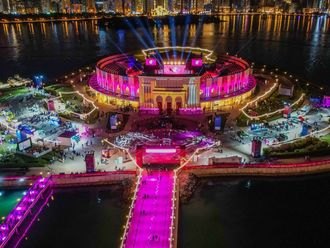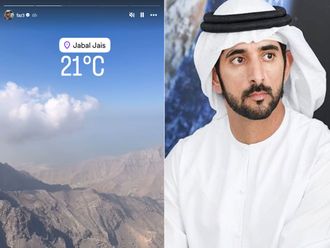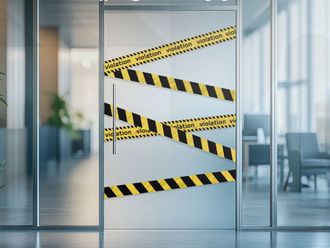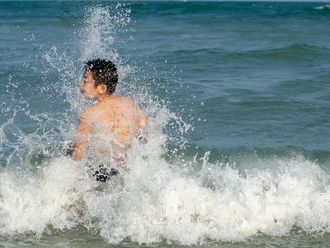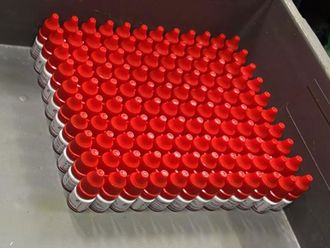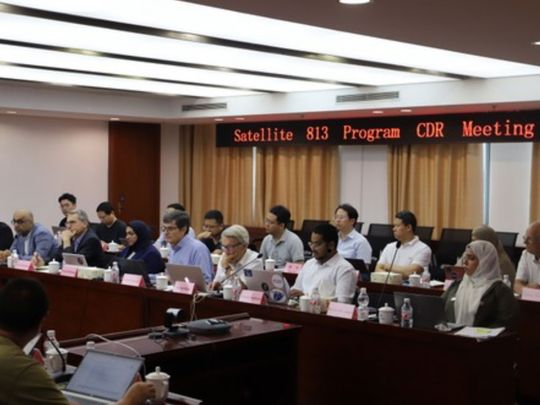
Dubai: The National Space Science and Technology Centre (NSSTC) of the United Arab Emirates University (UAEU) on Tuesday announced that it conducted the critical design review sessions for the Arab Satellite 813 programme, aiming to provide accurate images and hyperspectral data for climate change studies and to support sustainable development goals.
This strategic programme, funded by the UAE Space Agency in cooperation with UAEU, serves as a cornerstone for enhancing cooperation among the Arab Space Cooperation Group in space science and technology. The team comprises a selection of Arab engineers and researchers who are passionate about space and remote sensing applications, in addition to the national cadre.
The sessions were held with the participation of the Arab Satellite engineers and a selection of experts and specialists, in addition to representatives from the UAE Space Agency. The final design of the mission was reviewed, with overall assessment of the satellite design and its payload of different sensors.
The design of the ground support systems, which will be provided to the centre’s ground station to enable the operation of the satellite from the centre’s headquarters at UAEU in Al Ain city, has also been confirmed.
Succesful review
Salem Butti Salem Al Qubaisi, director general of the UAE Space Agency, said: “The Arab Satellite 813 project is a representation of our shared aspirations and the culmination of our collective leading capabilities in the space sector. It is also a clear reflection of our leadership’s vision to promote collaboration between Arab countries and elevate our mutual capabilities in terms of research and technology to the next level. The project will support our efforts to offer innovative solutions to climate and environmental challenges and a critical step towards building a brighter future for Arab innovation in this vital field.”
Al Qubaisi added: “This project symbolises the efforts to boost regional integration in space sector, and will promote knowledge exchange, achieve sustainable development and technological advancement, and lay the foundation of a strong pool of Arab talents capable of facing current and future climate challenges.”
He also confirmed that the design review was a success, and the team is now ready for the assembly integration and testing (AI&T) phase at the NSSTC at UAEU to ensure all instruments are in optimum operational condition.
Innovative solutions
Prof. Ahmed Ali Al Raeesi, acting vice chancellor of the UAEU, said: “At UAEU, we are proud to participate in this promising programme, which highlights the ambitious vision of our leadership in enhancing innovation and Arab cooperation in the space sector. The Arab Satellite 813 programme represents not just an international scientific and technological achievement; through this programme, we aim to provide innovative solutions for the climate and environmental challenges facing our region and to enhance the research and technological capabilities of our scientists and engineers. We believe that collaboration and partnership are the optimal ways to achieve breakthroughs and prosperity. We are proud to be part of this leading-edge initiative.”
He added, “We are committed to providing a state-of-the-art environment for education and research through academic programmes, research structures, and distinguished researchers, enabling our students and researchers to innovate and progress. Through this programme, we are integrating expertise and knowledge from various countries, thereby enhancing our collective capacity in the space sector. We hope that this programme will catalyse further joint initiatives in the future and contribute to building a sustainable and prosperous future for generations to come. UAEU will always support groundbreaking initiatives that contribute to achieving scientific and technological advancement in the region and worldwide.”
Next phase
Meanwhile, Ali Al Shehhi, director of NSSTC, said that in the next phase, the assembly and integration will be held at the advanced facilities of the NSSTC at UAEU. During the design review sessions, it was ensured that the centre’s assembly, integration, and testing facilities were ready to execute the required tasks efficiently.
This programme is characterised by the hyperspectral imaging payload capable of capturing and processing information across a wide range of wavelengths within the electromagnetic spectrum. Unlike conventional cameras, this payload can capture information in many narrow, contiguous bands across the spectrum, enabling it to analyse details with high precision. Consequently, it contributes to a deeper understanding of the scenes it captures.
This programme will also enhance the UAE’s capabilities of collecting data and sharing it with Arab space agencies and specialists in the field. It is also considered a valuable opportunity for engineers and scientists in the Arab region to participate in developing satellites and promoting the use of space technology for a more advanced, innovative future for our Arab region.



